
by: Eric Malloy, National Director, BFP Canada
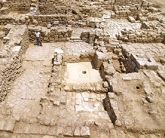
Excavated foundations from a Second Temple period residential area Photo by Ashernet
When we bring Christians to Israel, there are certain places we believe they absolutely must see. Those include the Sea of Galilee and Jordan River, Capernaum, Dead Sea, the Jewish Quarter of Jerusalem’s Old City and the Western Wall (Kotel). But at the top of the list is the site of the Temple Mount Excavations. Some compelling features of this remarkable dig are the rubble of fallen stones from the wall dating back to the Temple’s destruction and a 13-meter-wide (43 ft.) paved Herodian street that might well have been walked on by Yeshua Himself.
Equally impressive are the massive Herodian stones forming the base and structure of the Wall. Some of these stones measure 10 m. (33 ft.) long, 1 m. (3.2 ft.) high, 1.5 m. (5 ft.) wide and weigh 50-100 tons, and, Temple Mount archaeologists have found much larger ones. BibleWalks.com tells us, “The destruction in AD 70, following the Jewish revolt against the Romans, left most of Herod’s second temple in rubble. Only a few remnants of this remarkable structure remained, such as [portions of] the western wall, Hulda Gate, and the south-western corner in the southern wall.”
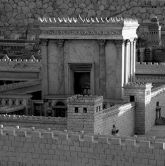
A model of the Temple in the days of Herod Israel Museum/Ashernet
After the Babylonian exile, under the leadership of Zerubbabel, we read concerning the restoration of Solomon’s Temple, “Now when the builders had laid the foundation of the temple of the LORD, the priests stood in their apparel with trumpets, and the Levites, the sons of Asaph, with cymbals, to praise the LORD according to the directions of King David of Israel” (Ezra 3:10). The NIV Archeological Study Bible notes that King Herod’s undertaking was actually the renovation and expansion of Zerubbabel’s postexilic Temple that was in terrible disrepair. This “gave Herod the Great the opportunity to construct the greatest of his numerous building projects and perhaps the most impressive structure Jerusalem has ever seen.”
One of King Herod’s claims to fame was his skill and knowledge as an extraordinary builder. The King Herod Israel Museum, Jerusalem website relates, “Lionized as the ‘the greatest builder of human history,’…“Herod the Great: The King’s Final Journey” seeks to provide a better understanding of this ancient figure through the monumental architecture he created and the art and objects with which he surrounded himself.” G. Douglas Young, founder of Bridges for Peace, says of Herod, “…he was a strong Hellenist, without biblical religion. He erected many Greek buildings, even establishing the Greek cities of Caesarea and Sebaste (Samaria). Yet he sought to pacify his Jewish subjects by reconstructing the Jerusalem temple on magnificent lines starting in 20 BC.”
Despite his architectural talent, Herod had a serious cruel streak and his motives were largely self-serving. In The Phases of Jewish History we are reminded, “Herod was a prolific builder, especially when it came to building palaces for himself. He built one at Masada, overlooking the Dead Sea, a second near Bethlehem and a third in Jerusalem. In Hebron, he built a mausoleum over the burial site of the patriarchs, but his most famous structure was the Temple. The existing one, built after the return from the Babylonian exile, was not considered sufficiently prestigious, and so over a period of ten years Herod reconstructed it to twice its height and covered it with marble.”
Each of these instances demonstrates Herod’s talent for creating long-lasting structures. Without the foundations he put in place, these buildings would have long ago disappeared into the dust of history.
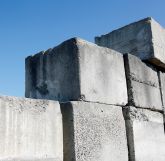
Standing at the excavated southwestern corner of Temple Mount one can see and touch the enormous stones that Herod used to give the walls and platform the necessary strength. One can only imagine that, had the Romans not destroyed the Temple, it may have stood until today because of its sure foundation. The attempts by the Jewish people to throw off the yoke of Roman oppression in both AD 70 and AD 135 resulted in the destruction of the Temple. Subsequent centuries saw additional damage visited on the Temple Mount, and yet the foundation stones remain for all to see!
What does this tell us about the function of foundation? Merriam-Webster’s definition includes, “the act of founding; a basis (as a tenet, principle, or axiom) upon which something stands or is supported…; an underlying base or support; especially: the whole masonry substructure of a building; a body or ground upon which something is built up or overlaid.” Synonyms include bedrock, cornerstone,footing and groundwork.
Envisioning the bedrock, underpinning and substructure of the Temple Mount gives clues as to the importance of a firm foundation. The Temple, modeled after the wilderness Tabernacle, was to be a sanctuary, a dwelling place for the Shekinah—God’s glorious presence. Following the prayer of dedication of Solomon’s Temple recorded in 2 Chronicles 6, the Scriptures tell us, “Now when Solomon had finished praying, fire came down from heaven and consumed the burnt offering and the sacrifices, and the glory of the LORD filled the house….All the sons of Israel, seeing the fire come down and the glory of the LORD upon the house, bowed down on the pavement with their faces to the ground, and they worshiped and gave praise to the LORD, saying, ‘Truly He is good, truly His lovingkindness is everlasting’” (2 Chron. 7:1, 3).
This profound stage in Israel’s journey re-established God’s covenantal relationship with His people. “Then the LORD appeared to Solomon at night and said to him, ‘I have heard your prayer and have chosen this place for Myself as a house of sacrifice… and consecrated this house that My name may be there forever, and My eyes and My heart will be there perpetually. As for you, if you walk before Me as your father David walked, even to do according to all that I have commanded you, and will keep My statutes and My ordinances, then I will establish your royal throne as I covenanted with your father David, saying, ‘You shall not lack a man to be ruler in Israel’” (2 Chron. 7:12, 16-18).
The picture here is vivid—where God chooses to make His Shekinah dwell will be based on a permanent, unshakable foundation. Perhaps prophets and apostles developed this word-picture as they walked through the precincts of the Jerusalem Temple, seeing first-hand the awe-inspiring design and structure—possibly some of the same stones we see today.

Reistlin Magere/shutterstock.com
The Scriptures use the metaphor of a foundation to describe how Almighty God created the earth. “He established the earth upon its foundations, so that it will not totter forever and ever” (Ps. 104:5). In His dialogue with Job, God asks the rhetorical question, “Where were you when I laid the foundation of the earth? Tell Me, if you have understanding, who set its measurements? Since you know. Or who stretched the line on it? On what were its bases sunk? Or who laid its cornerstone, when the morning stars sang together and all the sons of God shouted for joy? (Job 38:4–7).”
God left nothing to the imagination when He instructed Moses concerning the intricate detail for the wilderness Tabernacle and its holy contents, designed to be His meeting place with the children of Israel (Exod. 25–31; 37–40). Once completed, the glory of the LORD descended. “Then the cloud covered the tent of meeting, and the glory of the LORD filled the tabernacle. Moses was not able to enter the tent of meeting because the cloud had settled on it, and the glory of the LORD filled the tabernacle” (Exod. 40:34–35). Solomon’s Temple was later modeled after this very pattern.
The Temple Scroll, found in Cave II at Qumran in 1956, was so-named by Yigael Yadin, former head of the Institute of Archeology at the Hebrew University and renowned Dead Sea Scroll archaeologist. Adolfo Roitman, in Envisioning the Temple elaborates, “The scroll’s ambitious and highly sophisticated design for the new Temple drew on two main sources of inspiration. The first was biblical: the descriptions of the Tabernacle in the wilderness, Solomon’s Temple (including the version presented in the book of Chronicles), and Ezekiel’s envisioned Temple…he [the author of the scroll] was guided by the principle that the new temple should meet the highest possible architectural standards, while fulfilling the most minute halakhic [Jewish law, rules, and practices] requirements.”
The importance of a firm foundation is apparent in the Writings of the Apostles as well:
“Therefore everyone who hears these words of Mine and acts on them, may be compared to a wise man who built his house on the rock. And the rain fell, and the floods came, and the winds blew and slammed against that house; and yet it did not fall, for it had been founded on the rock. Everyone who hears these words of Mine and does not act on them, will be like a foolish man who built his house on the sand. The rain fell, and the floods came, and the winds blew and slammed against that house; and it fell—and great was its fall” (Matt. 7:24–27).
“For which one of you, when he wants to build a tower, does not first sit down and calculate the cost to see if he has enough to complete it? Otherwise, when he has laid a foundation and is not able to finish, all who observe it begin to ridicule him, saying, ‘This man began to build and was not able to finish.’ Or what king, when he sets out to meet another king in battle, will not first sit down and consider whether he is strong enough with ten thousand men to encounter the one coming against him with twenty thousand? Or else, while the other is still far away, he sends a delegation and asks for terms of peace. So then, none of you can be My disciple who does not give up all his own possessions” (Luke 14:28–33).
“For we are God’s fellow workers; you are God’s field, God’s building. According to the grace of God which was given to me, like a wise master builder I laid a foundation, and another is building on it.” (1 Cor. 3:9–10).
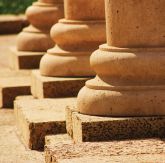
Zealous/bridgesforpeace.com
The Apostle Paul illustrates that the foundation of the believers’ faith was (and is) the eternal permanence of the truth that was proclaimed and taught by the apostles and prophets. The metaphor of a building used to describe those included in “God’s household” is common to the apostolic writers. Paul writes, “So then you are no longer strangers and aliens, but you are fellow citizens with the saints, and are of God’s household, having been built on the foundation of the apostles and prophets, Christ Jesus Himself being the corner stone, in whom the whole building, being fitted together, is growing into a holy temple in the Lord, in whom you also are being built together into a dwelling of God in the Spirit” (Eph. 2:19–22). Here the word foundation is transliterated themelios (Strongs 2310, θεμέλιος) and carries the meaning:
The NASB Study Bible notes, “The household in ancient times was what we today might call an ‘extended family’”. To the Corinthians Paul encourages, “For we are God’s fellow workers; you are God’s field, God’s building” (1 Cor. 3:9). Peter tells his audience, “…you also, as living stones, are being built up as a spiritual house…” (1 Pet. 2:5).
Clearly, the Scripture is painting a picture of a community of believers, firmly fitted together like a building constructed on a solid foundation, built for permanence. Each stone is responsible to the Lord, and to the other stones, to help create a dwelling place for the Spirit of God. However, centuries of Church history have yielded a mish-mash of ecclesiastical divisions, sects, denominations and even cults. Many of today’s Christians have fallen victim to a foundation-less “Christian consumer” mentality. Believers can “shop” for their preferred variety of “doing” church, with scores of other options should their “needs” not be adequately met. Many in Christendom have adopted the mistaken view that they can somehow consume what the “Church” offers, rather than recognizing the foundational truth that believers are the Church—i.e. a functioning, living, Spirit-filled house built of living stones. Unfortunately, many modern church leaders are perpetuating this confusion. The constant bombardment of spoken and written voices sending conflicting messages produces an effect resembling an out-of-tune orchestra playing from different music sheets rather than a unified body walking together with the illumination of the Holy Spirit. I believe the multitude and volume of these mixed and false messages are, in reality, among the signs that the “last days” are here.
For those who have ears to hear, eyes to see, and a heart to understand, the Holy Spirit is speaking forth both a warning and an encouragement to today’s Church and its leaders. He is reminding all of us…pastors and church leaders, Bible college/seminary educators, mission and ministry organizations, prayer/intercession movements, authors/writers, local churches and congregations, public speakers, apostles, bishops, prophets, priests, rabbis, evangelists, teachers, preachers, deacons/elders…that we are accountable to Him for every word written or spoken. He is warning against false teaching while encouraging those who remain true to His Word.
Individual and collective dogmas; ecclesiastical, doctrinal structures; systematic theologies, and interpretive preferences are no replacement for a solid biblical foundation.
Following the example of the prophets and apostles who came before us, it is critical that today’s believers humble themselves, and submit to the highest authority—the Holy Spirit’s revealed Truth as originally given. For some, this may mean shifting from our theological comfort zone closer to “the whole counsel of God.” This can be terrifying territory and many, therefore, avoid the process—not a good choice. Leaders who fail to yield to the Holy Spirit in this ongoing process are grieving Him, subjecting themselves to God’s loving, firm, yet painful discipline. Without the guidance of the Holy Spirit, it is all too easy to engage in some level of false teaching, misleading the Church. Scripture deals extensively with false teachers, shepherds, and prophets, giving warning and consequences. The Bible also gives the necessary guidance and direction needed to learn, believe, teach and live out Truth.
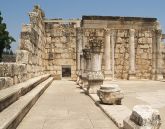
The foundation of the synagogue in Capernaum still stands today. Doin Oakenhelm/shutterstock.com
Timothy’s mentor, Paul, reminds him and those he leads to store up for themselves “the treasure of a good foundation for the future, so that they may take hold of that which is life indeed…guard what has been entrusted to you, avoiding worldly and empty chatter and the opposing arguments of what is falsely called ‘knowledge’—which some have professed and thus gone astray from the faith” (1 Tim. 6:19–21). Earlier in the letter Paul admonished, “I write so that you will know how one ought to conduct himself in the household of God, which is the church of the living God, the pillar and support of the truth” (1 Tim. 3:15).
Further instruction to Timothy to rightly handle the Scriptures and guard against ungodliness and heresy includes, “Nevertheless, the firm foundation of God stands, having this seal, ‘the Lord knows those who are His…’” (2 Tim. 2:19a). Paul was well-versed in Isaiah’s “foundation” imagery and the quarried stones for the foundation of Solomon’s Temple: “Therefore thus says the LORD GOD, ‘Behold, I am laying in Zion a stone, a tested stone, a costly cornerstone for the foundation, firmly placed. He who believes in it will not be disturbed’” (Isa. 28:16). “Then the king commanded, and they quarried great stones, costly stones, to lay the foundation of the house with cut stones” (1 Kings 5:17).
Christian scholar, D.A. Carson has provided an analysis of today’s postmodernism, which includes widespread biblical illiteracy, in his book, Becoming Conversant with the Emerging Church. Carson warns of the danger of believing that all human knowledge enjoys the same level of authority. Unless one has chosen to walk in a particular tradition, “…it becomes less obvious why one should revere the Bible, let alone read it, unless one is also reading many other religious texts and assigning to all of them the same authority.”
Author Phyllis Tickle, in her book The Great Emergence, has described Scripture’s place in modern life as resulting in “scriptural innocents whose very ignorance is pushing them in one of two directions.” The one group is drawn to “seek ever more eagerly” while the other “is propelling Scripture itself farther and farther into the attics of life where all antiques are stored for a respectful period of time before being thrown completely away.” One must wonder about the consequences of such crumbled or nonexistent foundations.
In the Writings of the Apostles, the book of Revelation describes “…the holy city, Jerusalem, coming down out of heaven from God.” (Rev. 21:10) having twelve gates representing the twelve tribes of Israel. “The wall of the city had twelve foundation stones, and on them were the twelve names of the twelve apostles of the Lamb (Rev. 21:14)” and “the foundation stones of the city wall were adorned with every kind of precious stone…” (Rev. 21:19a).
This recurring theme of a firm foundation spanning from Creation through to the eternal, heavenly Jerusalem, provides an anchor point for every believer. The shifting sands of worldly opinion and crumbled walls need not affect us if we are built on the unshakable foundation of biblical truth proclaimed by the prophets and apostles, illuminated by the Holy Spirit.
Bridges for Peace’s educational material attempts to be faithful to this as we fulfill our calling to educate and equip Christians to identify with Israel, the Jewish people and the biblical/Hebraic foundations of our Christian faith.
Carson, D.A. Becoming Conversant with the Emerging Church. Grand Rapids, MI: Zondervan Publishing House, 2005.
Ginsbury, Philip and Raphael Cutler. The Phases of Jewish History. Jerusalem: Devora Publishing, 2005.
NIV Archaeological Study Bible. Grand Rapids, MI: Zondervan Publishing House, 2009.
Roitman, Adolfo. Envisioning the Temple. Scrolls, Stones, and Symbols. Jerusalem: The Israel Museum, 2003.
Tickle, Phyllis. The Great Emergence. How Christianity is Changing and Why. Grand Rapids, MI: Baker Books, 2008.
Young, G. Douglas, ed. Young’s Bible Dictionary, Tyndale Desktop Reference Edition. Carol Stream, IL: Tyndale House Publishers, 2007.
Zondervan NASB Study Bible. Grand Rapids, MI: Zondervan Publishing House, 1999.
www.biblewalks.com/Sites/TempleMount.html
www.goisrael.com/Tourism_Eng/Articles/Newsletter/Pages/King-Herod-Israel-museum,-Jerusalem.aspx
www.merriamwebster.com/dictionary/foundation?show=0&t=1369132777
All Scripture is taken from the New American Standard Bible (NASB), unless otherwise noted.
All logos and trademarks in this site are property of their respective owner. All other materials are property of Bridges for Peace. Copyright © 2025.
Website Site Design by J-Town Internet Services Ltd. - Based in Jerusalem and Serving the World.